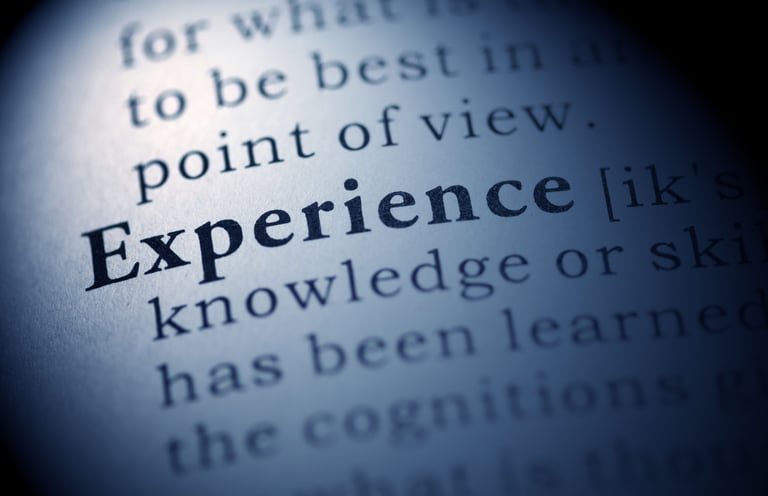From Calculation to Judgement to Building Decision Intelligence in Project Risk Management
In project environments, we often celebrate data, models, simulations and dashboards that promise clarity. But the true power of risk management doesn’t come from the numbers alone. It comes from how those numbers are interpreted and acted upon. The real engine of performance is the progression from calculation → judgement → decision, and at its heart lies something more powerful: decision intelligence.
Why This Matters for Project Outcomes
Projects succeed not because they avoid uncertainty, but because they respond to it intelligently. Embedding decision intelligence in risk management means:
• Better prioritisation — focusing on the few risks that truly drive outcomes
• Faster adaptation — enabling leaders to make adjustments before risks become issues
• Stronger accountability — creating traceability between risk information, judgement and decision rationale
• Cultural maturity — fostering conversations about uncertainty, not just reports about it
When teams understand how to move fluidly between calculation, judgement and decision, they shift from a compliance mindset (“have we modelled this risk?”) to a capability mindset (“how are we using this insight to make a better call?”). That’s how risk management becomes a value engine rather than a governance burden.
The Comfort of Calculation
In the world of risk management, we love numbers — we model, we simulate and we quantify. Calculations give us a sense of confidence and they can appear to look quite authoritative. They make uncertainty feel measurable. From Monte Carlo simulations to cost-risk curves, these analytical tools have become the foundation of modern project management.
They provide the language of probability and impact, helping us express risk in quantifiable terms that executives and regulators can engage with.


The Takeaway
We often talk about improving our tools, models, and dashboards. But perhaps the next frontier isn’t more data — it’s better conversations about data. Teaching teams how to move fluidly between calculation, judgement and decision is what creates mature, adaptive organisations. It’s what turns risk management from compliance to competitive advantage. Imagine if every risk review ended not with a spreadsheet, but with a shared decision everyone understood — one that blended facts, experience and values. That’s what risk maturity really looks like!
The Power of Judgement
This is where judgement comes in with the human capability to interpret data through the lens of experience, context and intuition. Judgement gives risk management its human depth. It recognises that projects are complex, adaptive systems, not predictable machines.
The best risk managers know that good judgement doesn’t reject data — it completes it. Judgement recognises the limits of calculation. It’s the risk manager who says:
“The numbers suggest we’re fine — but given the supplier’s volatility and the political pressure around delivery, the model is probably optimistic.”


But here’s the truth: a calculation doesn’t manage risk — a decision does. A calculation is not decision-making. It’s the input not the outcome. A beautifully modelled Quantitative Cost Risk Analysis (QCRA) can tell you there’s a 80% chance your project won't exceed £250 million, but it won’t tell you why that matters or what to do next. Data without interpretation is sterile. It’s clarity without consequence.
The Moment of Decision
A decision is not the end of the process but is the moment where everything converges. It’s the transformation point where analysis and interpretation become action. In the world of major projects decisions are rarely binary.
They exist in shades of probability, confidence and consequence. Whether to approve additional contingency,
re-sequence work, or change delivery strategy, every choice carries ripple effects across time, cost and reputation.
Decision intelligence is where calculation and judgement fuse into action. It helps decision-makers navigate that complexity with contextual clarity.
That statement is not a rejection of data — it’s a completion of it. Judgement converts information into insight. It acknowledges the nuance, the cultural dynamics, contractual pressures and behavioural signals that rarely show up in a spreadsheet. In high-performing organisations, this blend of analytical discipline and human interpretation forms the basis of decision intelligence which is the ability to combine quantitative evidence with qualitative awareness to guide smarter, faster and more confident decisions.


Instead of drowning in data or relying on gut feel alone, leaders can see the whole picture:
• What the numbers indicate
• What experience implies
• What the organisation values most
The result? Decisions that are not only informed but intelligent. Whether it’s approving contingency, changing strategy or pausing a project, the quality of that decision defines whether the organisation learns, adapts or repeats mistakes. Good decisions don’t rely purely on evidence or intuition. They balance both — combining the rigour of analysis with the courage of conviction.
The Human Edge of Decision Intelligence
Technology is advancing fast! AI-driven analytics, predictive models and real-time dashboards are reshaping how projects perceive risk.
But as the data grows richer, the human role becomes more vital. Decision intelligence isn’t about replacing judgement, it’s about amplifying it.
It’s the difference between seeing a forecast and understanding its implications. Between reacting to a number and responding to a signal.


In the next generation of infrastructure and energy projects, the organisations that thrive will be those that integrate:
• Calculation (data discipline)
• Judgement (contextual intelligence)
• Decision (action and learning)
That triad is what turns information into foresight and foresight into performance. Calculation creates clarity. Judgement adds meaning. Decision drives action. Decision intelligence unites them all.
If we can teach our teams not just to analyse risk, but to think through it — to translate analysis into intelligent choices — then we transform risk management from a defensive function into a strategic capability. And that’s how better decisions build better projects!
Written with the assistance of generative AI but powered by humans with the knowledge, capability and experience to empower projects to drive better outcomes
At Kaleido, we bring Decision Intelligence to life by empowering leaders and project teams to Anticipate, Evaluate and Respond to uncertainty with confidence. We help bring clarity from complexity by revealing meaningful insights leading to clearer actionable choices that ultimately drive better project outcomes.
Learn more about Deepak Mistry on LinkedIn: https://www.linkedin.com/in/deepak-mistry-74004989/
Follow Kaleido on LinkedIn: https://www.linkedin.com/company/kaleidoprojects/





